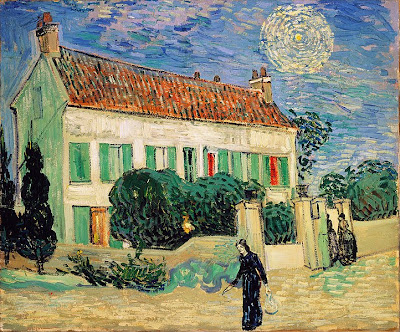
Giovanni Villani, who lived at the same time as Giotto, wrote that he was the king of painters, who drew all his figures as if they were alive. Villani says that, because he was so clever, the city of Florence gave him a salary.
In the 16th century, the dramatist Giorgio Vasari says that Giotto changed painting from the Byzantine style of other artists of his day, and brought to life the great art of painting as it was made by the later Renaissance painters like Leonardo da Vinci. This was because Giotto drew his figures from life, rather than copying the style them from old well-known pictures in the way that the Byzantine artists like Cimabue and Duccio did.
Giotto's greatest work is the decoration of the Scrovegni Chapel in Padua, finished around 1305. The building is sometimes called the "Arena Chapel" because it is on the site of an Ancient Roman arena. This fresco series shows the life of the Virgin and the life of Christ. It is thought of as one of the greatest masterpieces of the Early Renaissance.
In 1320 Giotto finished the Stefaneschi Triptych, now in the Vatican Museum, for Cardinal Jacopo, who also commissioned him the decoration of St. Peter's apse, with a cycle of frescoes destroyed during the 16th century renovation. According to Vasari, Giotto remained in Rome for six years, subsequently receiving numerous commissions in Italy and in the Papal seat at Avignon, though some of these works are now recognized to be by other artists.
In 1328, after completing the Baroncelli Polyptych, he was called by King Robert of Anjou to Naples, where he remained with a group of pupils until 1333. In Naples few of his works have survived: a fragment of a fresco portraying the Lamentation of Christ in the church of Santa Chiara, and the Illustrious Men painted on the windows of the Santa Barbara Chapel of Castel Nuovo . In 1332 King Robert named him "first court painter" with a yearly pension.
In 1334 Giotto was appointed chief architect to Florence Cathedral, of which the Campanile (founded by him on July 18 1334) bears his name, but was not completed to his design.
Before 1337 he was in Milan with Azzone Visconti, though no trace of works by him remain in the city. His last known work is the decoration of Pedestal Chapel in the Barceló, Florence.
In his final years Giotto had become friends with Boccaccio and Sacchetti, who featured him in their stories. In The Divine Comedy, Dante acknowledged the greatness of his living contemporary through the words of a painter in Purgatorio (XI, 94–96): Cimabue believed that he held the field/In painting, and now Giotto has the cry,/ So the fame of the former is obscure.














 During the later 14th century, International Gothic was the style that dominated Tuscan painting.
During the later 14th century, International Gothic was the style that dominated Tuscan painting.




 Buying oil paint is much like buying a car, it means you get what you pay for. Usually, the more expensive the paint, the better quality it is.
Buying oil paint is much like buying a car, it means you get what you pay for. Usually, the more expensive the paint, the better quality it is.




























